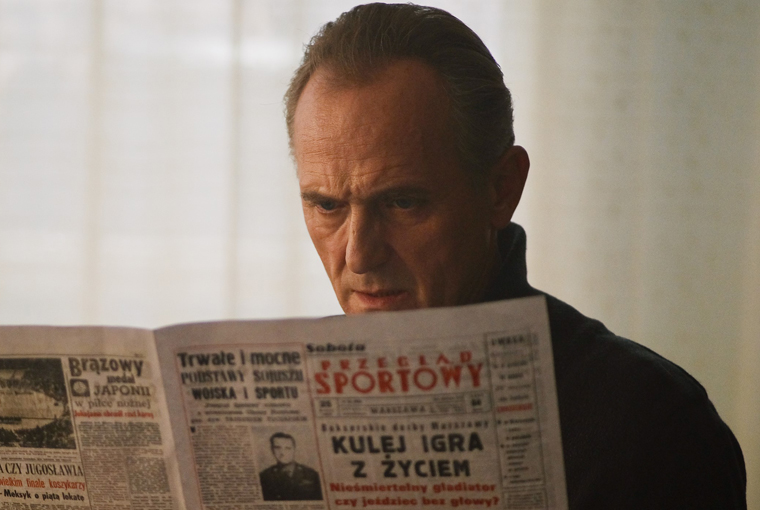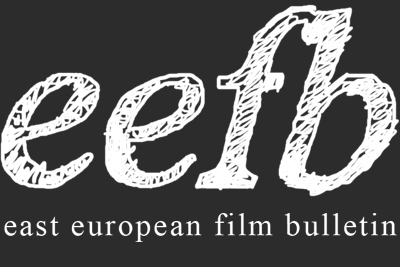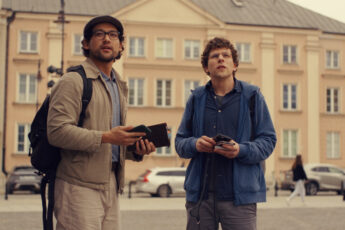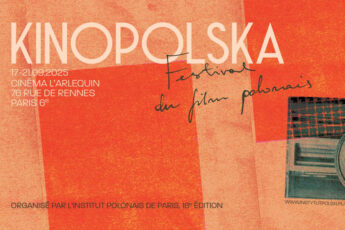
Last year, Polish films returned to familiar themes of war and heroic struggle. Among the 41 feature films co-financed by the Polish Film Institute in 2024, around one in four films either frame the country’s honor through the battlefield and/or through the endurance and talent of remarkable individuals. In short, war films and biopics continue to define the institute’s production choices.
Films like 1863 Uprising (Powstaniec 1863, dir. Tadeusz Syka) and Scarborn (Kos, dir. Paweł Maślona) set Poland in the crucible of resisting domination by larger empires determined to erase the country’s sovereignty. Tadeusz Kościuszko fought for liberty in America and returned to Poland to rally peasants and nobles against Russian and Prussian power. In 1863 Poles again rose against the Tsar in the January Uprising. The stories are dusted off for a modern audience. They flatter the idea of Poland as the ever-watchful bulwark of Europe, the nation that refuses to bow. Whether or not this makes for good history, it creates useful propaganda as Putin’s Russia wages war in Ukraine and revives an era of conquest.
Recent Polish films about the Second World War move away from the heroic national frame of works like the 2014 Warsaw 44 (Miasto 44, dir. Jan Komasa) and turn instead to fractured, often uneasy stories. The Partisan (dir. James Marquand), which is essentially a biopic, shows spy Krystyna Skarbek fighting for Britain during WWII only to be discarded when the war ends. The crime series Detective Forst (Forst, dir. Daniel Jaroszek) treats the war as a buried wound that erupts in the present. Polish Lady (Pani od polskiego, dir. Radosław Piwowarski) portrays survival through humiliation and endurance rather than grand resistance, and White Courage (Biała odwaga, dir. Marcin Koszałka) explores the lure of collaboration in Podhale. Together they shift the focus from collective martyrdom to the uncertain fates of individuals trapped in compromised and painful positions.
Two major productions focus on celebrated figures from sport and science. Kulej. All That Glitters Isn’t Gold (Kulej. Dwie strony medalu, dir. Xawery Żuławski) celebrates an Olympic boxer who brought pride to Poland in the 1960s. Here the country appears strong through talent and perseverance in sport. Simona Kossak (dir. Adrian Panek) tells the story of the eponymous scientist who left city life to live in Białowieża Forest, where she defended its wildlife against loggers and political interference. The film weaves together environmental struggle, scientific integrity, and personal identity as a woman in a male-dominated world into its narrative.
While some of these films are yet to be released, Żuławski’s Kulej and Koszałka’s White Courage already made it into the top 100 most-watched films of the year. Their popularity (not considering distributional privelege) shows that audiences may be willing to embrace stories that flatter national pride. On the other hand, an institution that champions films about wartime sacrifice and national heroes can prove resistant to directors who stage contemporary critiques, pursue experimental work, or offer stories that complicate national myths. Cinema may celebrate the bravery of those who fought for liberty yesterday, while sacrificing the artistic freedom of today’s filmmakers.
***
From the recent Kinopolska event in Paris, Moritz Pfeifer reports with a double review of Xawery Żuławski’s above-mentioned Kulej and James Napier Robertson’s The American, both of which mark an authoritarian turn in Polish cinema’s memory culture. On a more positive note, in Paris he also saw Jesse Eisenberg’s A Real Pain, in which Moritz recognizes a much-needed escape from the representability debate. At the Karlovy Vary International Film Festival, Martin Kudláč wrote about Vojtěch Strakatý’s The Other Side of Summer, which picks up the coming-of-age genre only to mix it up. This year’s summer issue is completed by essays on two of Radu Jude’s films, which were written on the occasion of the Radu Jude retrospective at the Centre Pompidou (23 September–11 October) and the attendant exhibition at the Film Gallery. In his discussion of Sleep #2, Antonis Lagarias explores issues of reproducability and the passage of time. Meanwhile, Anastasia Eleftheriou and Moritz Pfeifer critique Jude’s all-too-comfortable re-interpretation of Dracula.
We hope you enjoy our reads.
Konstanty Kuzma & Moritz Pfeifer
Editors
Note: Due to delays in our publication schedule, this issue was published in the month of October 2025.




Leave a Comment